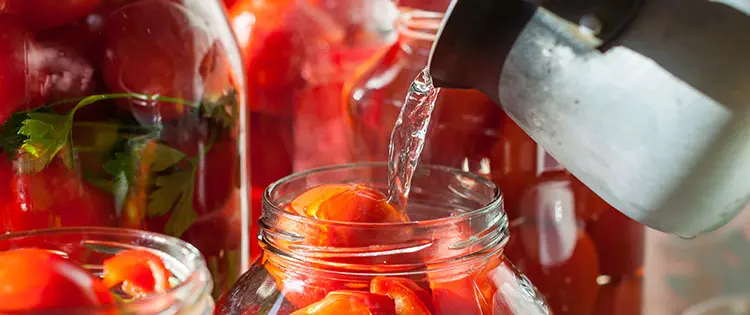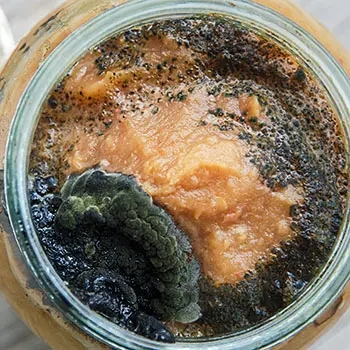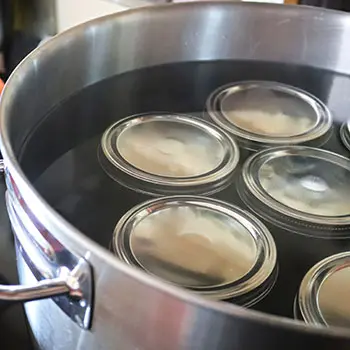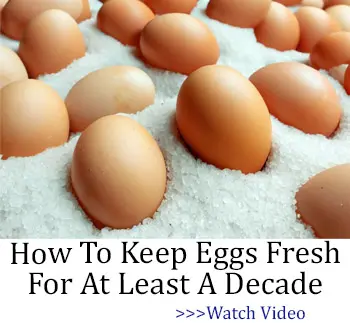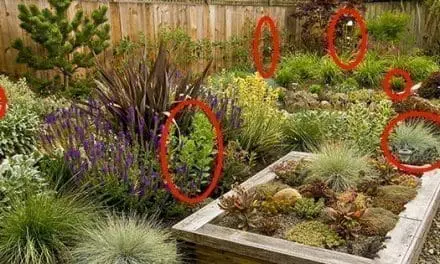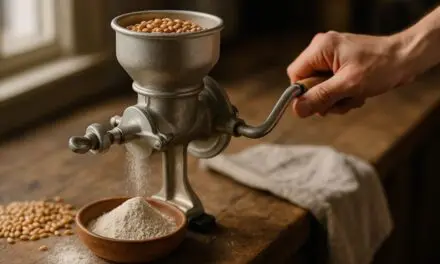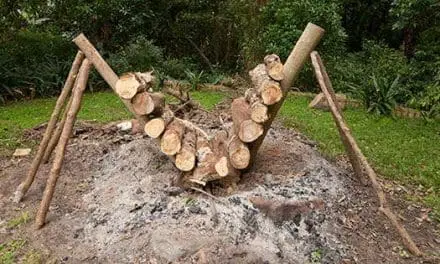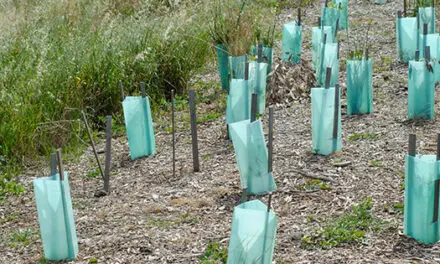If you ever need to rely on your own supplies for the long haul, home canning is a must-have skill. You can’t grow vegetables year-round—every area has a growing and harvest season based on its climate. Once your yearly harvest is done, there’s no more fresh produce until the next season.
To keep eating healthy throughout the year, you need to preserve most of your crop for later. Freezing works, but what if power outages become a problem? Even a few hours without electricity can ruin everything stored in the freezer. That’s why canning is the go-to solution—it’s reliable and something every homesteader should know.
Canning isn’t complicated and doesn’t require much gear. With the right jars, lids, and a way to boil water, you’re ready to start. However, it does call for careful attention. If you’re not precise, the food can spoil in the jar—or even become dangerous.
Principles of Canning
Food goes bad because oxygen breaks down its nutrients and microorganisms start feeding on it. Canning preserves food by keeping it safe from both of these threats. When food is sealed inside the jar, while oxygen and microorganisms stay outside, it can’t spoil—at least that’s the idea.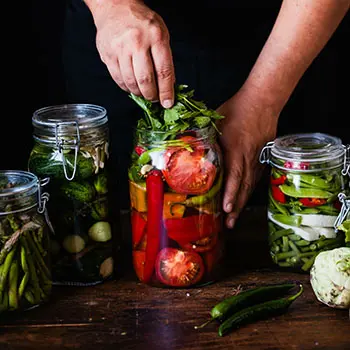
But it’s a bit more complicated than just getting a tight seal on the jar lid. There’s always some air trapped inside, and if there’s too much, it can spoil the food before the oxygen is used up. Excess air also allows bacteria or mold to grow. That’s why getting as much air out of your jars as you can is so important.
However, this effort to remove oxygen can introduce a serious risk. Most bacteria can’t thrive without enough oxygen, but some thrive in low-oxygen environments. Some of these bacteria are harmless, others might cause a mild illness, but one in particular is extremely dangerous—and it grows fast in improperly canned food.
Related: Dutch Oven Recipes Cowboys Survived On
This bacteria is called Clostridium botulinum. It’s commonly found in soil worldwide, so most vegetables encounter it during growth. Typically, it’s harmless because it stays dormant when there’s more than about two percent oxygen. But in low-oxygen conditions, it quickly starts to multiply—and releases a deadly neurotoxin. The toxin, commonly known as botox, is used in tiny amounts for wrinkle treatments, but it’s also incredibly dangerous.
Botox is the most potent poison known, far deadlier than cyanide, rattlesnake venom, or nerve agents. Just an ounce can kill 175,000 people—a tiny amount in a contaminated jar of food is enough to be fatal.
Properly canned food is safe from botulism, but if you get it wrong, you’re taking a big risk. Unless you follow the right steps, eventually you might open a jar teeming with C. botulinum. If you catch it in time and can get to a hospital, it can be treated—but if you’re living off-grid, it could be fatal.
When you rely on yourself, the only protection against botulism is to can your food the right way and stop the bacteria from taking hold. Here’s how to avoid these deadly mistakes:
Canning Bacteria
The fewer bacteria that go into the jar with your fruits or vegetables, the lower your risk of a dangerous infection. This means it’s crucial to thoroughly clean your produce before canning. Anything that grows above ground should be washed really well, while root veggies that have been in direct contact with soil might not be safe even after scrubbing.
It’s better to peel these to remove any lingering dirt and bacteria. Tomatoes should be peeled too. Blanching your produce can also help kill more bacteria for extra safety.
Related: Pioneer Recipes Every Homesteader Should Learn
After getting your produce clean, be careful not to let it get contaminated again. Jars, lids, and any utensils you use need to be sterilized. Regular kitchen cleaning isn’t good enough for canning.
When you cook dinner, a few bacteria here or there won’t matter because they don’t have time to multiply. However, with canned food that will sit for months or years, even a tiny number of microbes can grow into a huge problem by the time you open the jar.
Forgetting the Acid
C. botulinum thrives in low-acid environments, so acidity can slow or even kill the bacteria. Unfortunately, most vegetables that homesteaders like to can are low in acid, making them more prone to botulinum growth. Tomatoes are a bit of an exception, but you should avoid canning low-acid tomato varieties. For other vegetables, adding some acid like vinegar or lemon juice can help boost safety and even improve flavor. You don’t need to pickle everything, but bringing the pH of the liquid below 4.6 makes a big difference.
Fruits generally have a higher acid content than veggies (except for bananas and certain apple or pear varieties). This doesn’t completely eliminate the risk of botulism, but it does help lower it.
Keeping it Cool
Heat is a reliable way to kill bacteria, including C. botulinum, as long as you reach a high enough temperature for the right amount of time. For acidic foods like fruits and tomatoes, boiling water is generally safe since the botulism risk is already low. This also applies to other vegetables that have had acid added.
However, boiling isn’t enough for low-acid foods. When canning meat or low-acid veggies, the only safe way is to heat them to at least 240°F, which requires a pressure canner. For off-grid canning, a USDA-approved pressure cooker can be used, as it boils water at 250°F for a safe margin.
Bad Seals
Always check the seal on each jar before storing. Press down on metal lids with your finger; if it pops or moves, it’s not properly sealed. For jars with screw band lids, take off the band and gently pull on the lid. If it’s sealed, it will stay put; if it comes off, refrigerate the food or eat it immediately.
Sloppy Storage
Storing your canned food properly is key to keeping it safe and lasting longer. Clear glass jars let in light, which can discolor canned foods and make them less appealing. To avoid this, store your jars in a dark place or at least away from direct sunlight.
Choose a cool spot too. While heat is necessary during canning, it can ruin sealed jars. Temperatures above 75°F can make veggies mushy and boost microorganism growth.
Also, keep things dry. While glass won’t be affected by dampness, lids and screw bands can rust. Rusty lids may start letting in air, which can allow bacteria and molds to spoil the food and make it unsafe to eat.
Forgetting to Check
Before eating canned food, inspect the jar thoroughly. Check for cracks, bulges, leaks, or any discoloration. If you notice anything unusual, toss it out. When you open the jar, you should hear a rush of air as the vacuum seal breaks. If you don’t, the seal may have failed, making it unsafe to eat. Be cautious of any jars that spurt liquid or foam when opened.
Mold inside the jar is a red flag. It means the jar either leaked or wasn’t properly sterilized, signaling possible bacterial growth. If you see mold, throw the food away.
Canning Recipes Grandma Made Every Fall
DIY Canning Amish Poor Man’s Steak (Video)
How To Store Your Food If You Don’t Have A Lot of Space

